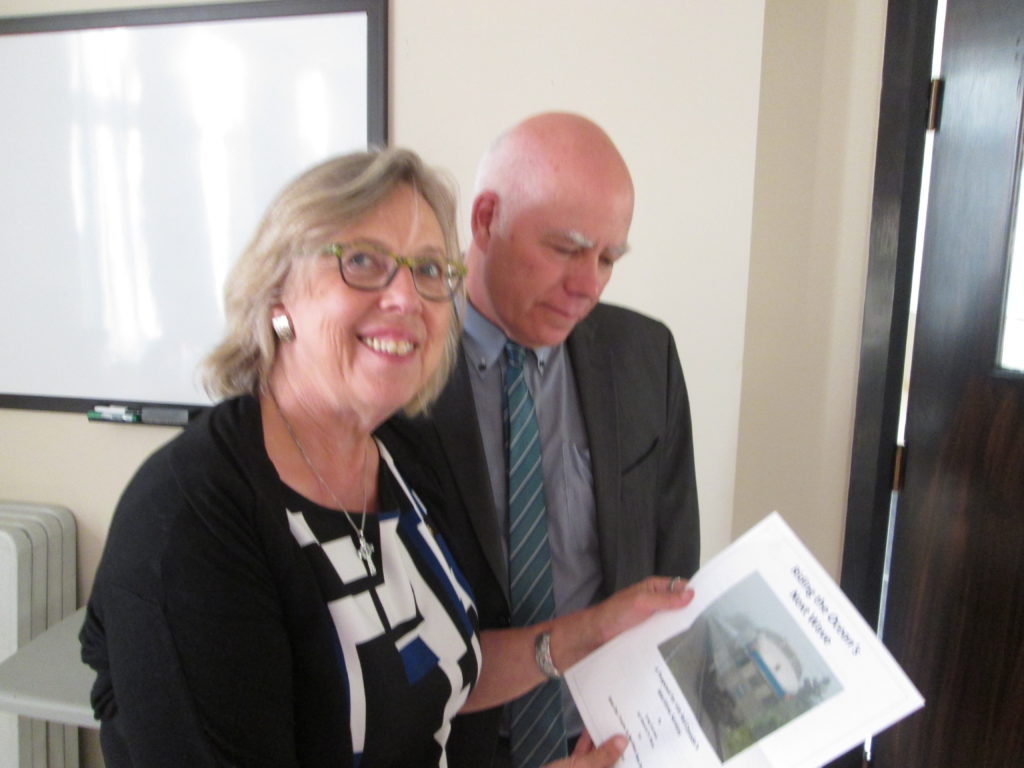
“VIA Rail’s Ocean is dying.” So begins the report recently completed by transportation consultant and advocate Greg Gormick for the advocacy group Save Our Trains in Northern New Brunswick. The new report is titled “Riding the Ocean’s Next Wave: A proposal for VIA Rail Canada’s Maritime services”, and was released in mid-August with considerable media coverage.
Gormick is no stranger to VIA’s Maritime services. He has completed reports on rail service in the region in the past, and toured Atlantic Canada as part of the “National Dream Renewed” campaign several years ago, aiming to generate support for improvements to VIA’s services across the country at a time when the future was looking particularly bleak.
His assessment of the current situation boils down, in essence, to three points: VIA is struggling to compete with discount airlines for end-to-end travel; their equipment is deteriorating; and the inconvenience of a tri-weekly schedule is simply unable to generate adequate ridership or effectively serve any part of the market. These are concerns that are generally shared by TAA.
VIA’s coach fares are usually competitively priced (the average Halifax-Montreal coach fare is considerably lower than even the cheapest discount flights), but the option to sit in a coach seat for an overnight journey may not be appealing to many passengers, particularly when compared to a two-hour flight. Sleeping car accommodations, which offer additional comfort, privacy, and included meals, should not necessarily be priced nor compared directly to a flight; but since the Renaissance equipment was introduced, the only sleeper accommodations available are double-bedrooms that are a dramatic increase in price from the base coach fare (and come with a 15% additional surcharge if you’re travelling alone, despite there being no single sleeper option). There is no reasonably priced intermediate, such as the berths and roomettes offered in VIA’s HEP equipment, that may help persuade more people to opt for the train.
The issues with the existing equipment extend far beyond the available accommodations. The Renaissance fleet is expensive to operate, has little operational flexibility, and has become increasingly unreliable in recent years. The forced withdrawal of one set of equipment for about a month earlier this year demonstrated that very clearly. Had that happened during the peak summer period, when all available HEP equipment was in service on the Canadian, VIA may not have had sufficient equipment available to substitute.
The tri-weekly schedule imposed in 2012 has been the single biggest impediment to the success and usefulness of VIA’s Ocean service, and has been something that TAA has continuously opposed. There is no way to build long-term ridership with such an infrequent and difficult to use schedule. TAA has been generally supportive of VIA’s proposal to launch daily Campbellton-Moncton and Moncton-Halifax regional trains, as we welcome any improvement to the railway’s Maritime service offering. However, we have continued to maintain that a daily Ocean would be easier to implement and would be more beneficial in the long-run, particularly if paired with additional inter-city expansions.
Greg Gormick’s recommended solution is to order new stainless-steel “Viewliner” cars – a proven design used by Amtrak since the late 1990s – and put them in daily service between Montreal and Halifax. The US carrier is now taking delivery of additional rolling stock in a second generation of this class, including sleepers, diners and baggage cars. He suggests there would be economics of scale if VIA were to piggyback on this order.
TAA believes this proposal has considerable merit, but the solution may not be quite as straightforward as the document suggests. There’s no doubt the Ocean will need new equipment in the near future as the Renaissance cars rapidly approach the end of their useful life, but are the Viewliners really such an easy answer? Construcciones y Auxiliar de Ferrocarriles (CAF) has struggled to produce the cars currently being built for Amtrak. The order was placed in 2010, with the intent for all cars to be delivered by 2015. To date, only the baggage cars and a few diners have been built, and it’s not at all clear when the sleepers or baggage-dorm cars may be completed. The report also calls for VIA’s order to include Viewliner coaches and daynighter deluxe coaches. No such design was included in the Amtrak order, and it’s not immediately apparent whether such design exists, or what sort of cost would be involved in developing these designs.
But planning to re-equip the Ocean in the long-term is essential if VIA intends to continue running the train beyond the time that the Renaissance equipment will expire. TAA supports any move that would supply VIA with new long-distance equipment, and therefore believes this proposal should be further examined. But we also recognize that attaching unrealistic expectations to particular options (e.g. the Viewliners) may damage the credibility of such proposals.
The document also includes some other key components, including infrastructure improvements, the restoration of the Chaleur service to Gaspé, and additional marketing to promote the Ocean. VIA has arguably done a good job in the last few years of improving and marketing their on-board product from a tourism perspective, and the heavy traffic through this summer has been a testament to that success. But tourist traffic at peak times does not guarantee the long-term sustainability of the train, nor does it help to serve the people living in the many communities along the line who rely on the train for basic transportation, or would like to be able to use it. The only way to better serve those people and ultimately grow ridership will be to make improvements to the service from a practical transportation point of view; infrastructure investments to reduce travel times, and frequency increases to make the schedule practical and useable.
By Tim Hayman
TAA board member, webmaster, and Vice President of Transport Action Canada
Read the full “Ocean’s Next Wave” document HERE






If you don’t order Viewliner equipment, which has had teething problems, what do you suggest that would get here before the Renaissance equipment is totally dead?
Robert,
The Viewliners may indeed be the best option, at least when it comes to sleepers and dining cars – we’re not disputing that. We’ve just raised two points that we think merit consideration, and we’d be happy to hear if Greg has answers to address these (as they don’t appear to be dealt with in the report). Those points, as outlined above, are:
1) There have been excessive delays in the production of these cars. Is it likely that production will accelerate in the future? On a related note, since it has been so long since the original order, would it still be feasible for VIA to piggyback on it?
2) Greg proposes variations of the Viewliners that are not part of the Amtrak order. Do these designs exist? Are we sure that CAF could build those versions, if VIA wanted them built? The report only mentions these in passing, and doesn’t really elaborate.
In case it still isn’t clear, we’re entirely on board with new equipment for the Ocean, and agree that it needs to happen immediately. We agree that there’s a very good case to be made for the Viewliners – that’s why we’ve shared this report with MPs and others that we’ve met with since it came out, and why we’ve shared it here and via our social media. We’d just like to see these couple of issues acknowledged and addressed, to make sure that the case that’s being made is as solid as possible.